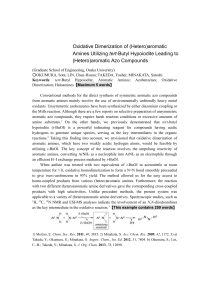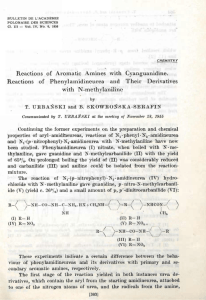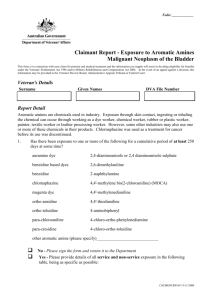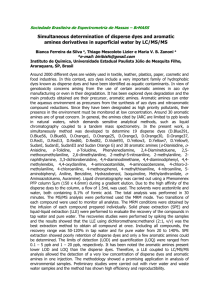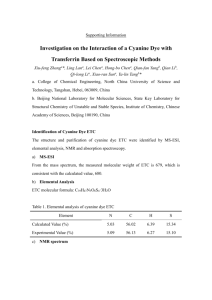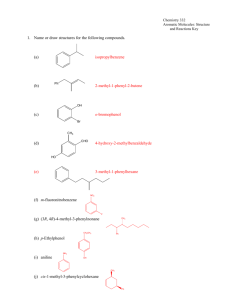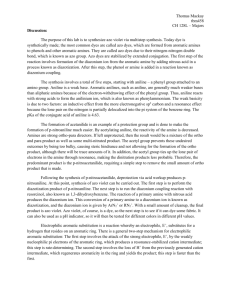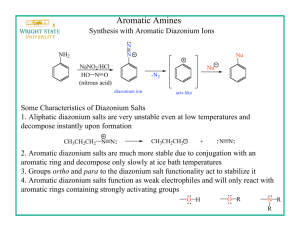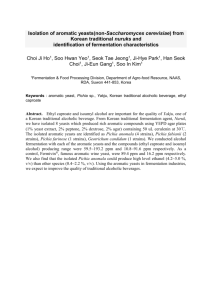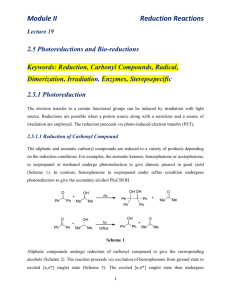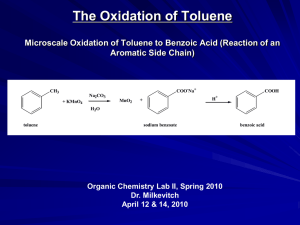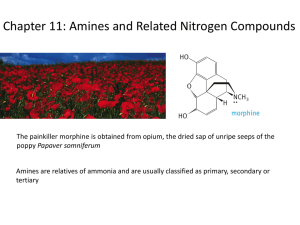Oxidative Dimerization of (Hetero)aromatic Amines Utilizing tert
advertisement
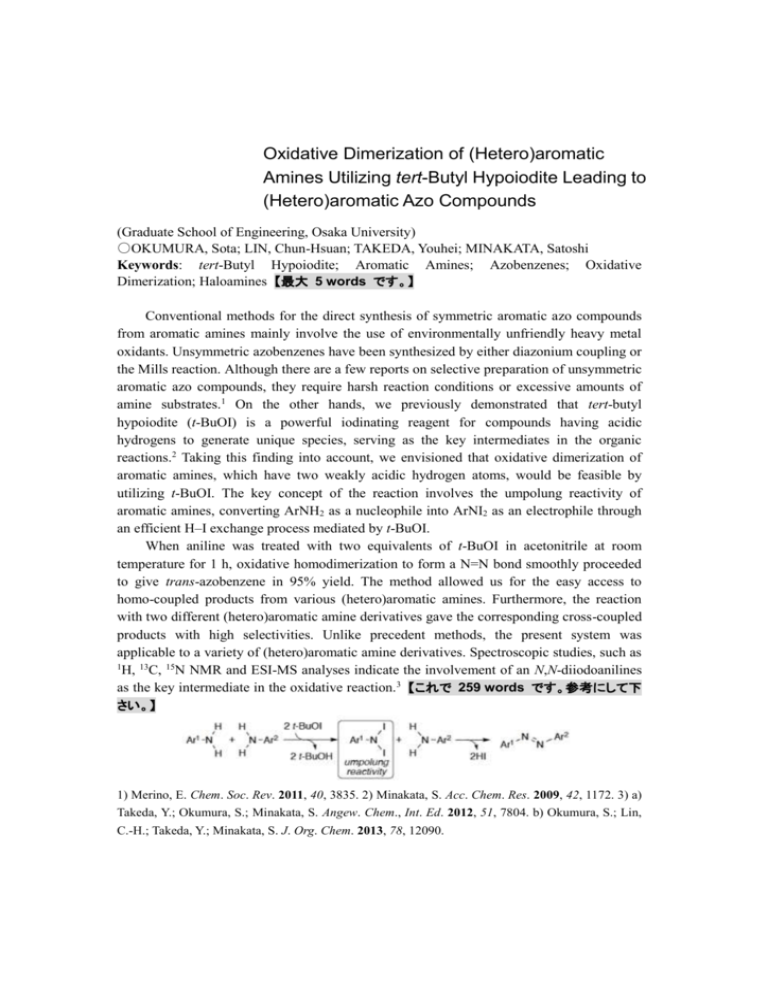
Oxidative Dimerization of (Hetero)aromatic Amines Utilizing tert-Butyl Hypoiodite Leading to (Hetero)aromatic Azo Compounds (Graduate School of Engineering, Osaka University) ○OKUMURA, Sota; LIN, Chun-Hsuan; TAKEDA, Youhei; MINAKATA, Satoshi Keywords: tert-Butyl Hypoiodite; Aromatic Amines; Azobenzenes; Oxidative Dimerization; Haloamines 【最大 5 words です。】 Conventional methods for the direct synthesis of symmetric aromatic azo compounds from aromatic amines mainly involve the use of environmentally unfriendly heavy metal oxidants. Unsymmetric azobenzenes have been synthesized by either diazonium coupling or the Mills reaction. Although there are a few reports on selective preparation of unsymmetric aromatic azo compounds, they require harsh reaction conditions or excessive amounts of amine substrates.1 On the other hands, we previously demonstrated that tert-butyl hypoiodite (t-BuOI) is a powerful iodinating reagent for compounds having acidic hydrogens to generate unique species, serving as the key intermediates in the organic reactions.2 Taking this finding into account, we envisioned that oxidative dimerization of aromatic amines, which have two weakly acidic hydrogen atoms, would be feasible by utilizing t-BuOI. The key concept of the reaction involves the umpolung reactivity of aromatic amines, converting ArNH2 as a nucleophile into ArNI2 as an electrophile through an efficient H–I exchange process mediated by t-BuOI. When aniline was treated with two equivalents of t-BuOI in acetonitrile at room temperature for 1 h, oxidative homodimerization to form a N=N bond smoothly proceeded to give trans-azobenzene in 95% yield. The method allowed us for the easy access to homo-coupled products from various (hetero)aromatic amines. Furthermore, the reaction with two different (hetero)aromatic amine derivatives gave the corresponding cross-coupled products with high selectivities. Unlike precedent methods, the present system was applicable to a variety of (hetero)aromatic amine derivatives. Spectroscopic studies, such as 1 H, 13C, 15N NMR and ESI-MS analyses indicate the involvement of an N,N-diiodoanilines as the key intermediate in the oxidative reaction.3 【これで 259 words です。参考にして下 さい。】 1) Merino, E. Chem. Soc. Rev. 2011, 40, 3835. 2) Minakata, S. Acc. Chem. Res. 2009, 42, 1172. 3) a) Takeda, Y.; Okumura, S.; Minakata, S. Angew. Chem., Int. Ed. 2012, 51, 7804. b) Okumura, S.; Lin, C.-H.; Takeda, Y.; Minakata, S. J. Org. Chem. 2013, 78, 12090.
